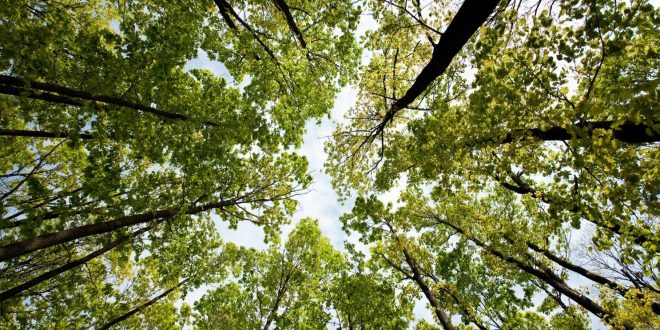INDIANAPOLIS (Feb. 5, 2019) — Lt. Governor Suzanne Crouch announced today a new economic development strategy to grow the state’s hardwoods industry. Unveiled at the Indiana Hardwood Lumbermen’s Association’s annual convention, the Indiana Hardwood Strategy will be used by the state to expand current and attract new wood processing facilities to Indiana and strengthen the hardwoods industry.
“Indiana is renowned for producing high quality hardwood timber, yet more than $230 million of sawmill products are coming from outside the state,” Crouch said. “With demand there and our robust, sustainable forest resource base, we want to provide that supply chain link and help capture some of that economic activity in Indiana.”
According to the strategy, the hardwoods industry contributes more than $10 billion to the state’s economy and supports over 70,000 high-wage jobs. The employment multiplier for this sector is 1.8, meaning that every 10 jobs directly related to hardwoods supports an additional eight jobs in the state.
In addition, the value of Indiana’s hardwood exports totaled more than $250 million in 2017, with Canada and China serving as the state’s top two markets. Export of logs, regardless of type, has increased in the past decade, and value-added products, such as paperboard products and veneer, are seeing growth, the strategy claims.
“For every dollar invested on a finished wood product, an additional 80 cents is generated by companies that support the production process,” said Bruce Kettler, Indiana State Department of Agriculture Director. “This is a significant sector within Indiana’s agricultural economy, and we look forward to using this strategy to take it to the next level.”
Another component identified by the strategy is the importance of sustainability and proper forest management. Indiana has approximately 4.9 million acres of forestland, of which, 84 percent is privately owned, 8 percent is owned by state and local government and 7.5 percent is owned by the federal government.
The total acreage of timberland in Indiana has steadily increased since the 1960s, and forests are growing in volume more than 3.3 times the amount being removed each year.
“Hardwoods lead Indiana agriculture in the economic impact because of the value added processing after the initial manufacturing output, but even so, there are still millions of dollars of logs leaving the state each year,” said Brett Franklin, owner of Tristate Timber LLC. “The hardwood strategy will promote expansion of existing businesses as well as new opportunities for value added demand in Indiana.”
To grow the state’s hardwoods industry, the strategy identified three key focus areas: business development, education and marketing.
Some of the specific initiatives under these areas include strengthening Indiana’s existing hardwoods industry by expanding current processing, attracting new companies to the state, educating consumers and businesses on the sustainability of the hardwoods industry, reducing leakages and developing an ongoing campaign to promote the value of hardwoods.
The strategy was commissioned by the Indiana Department of Natural Resources, the Indiana Hardwood Lumbermen’s Association and the Indiana State Department of Agriculture, and was completed by DJ Case & Associates, Purdue Center for Regional Development, Purdue University Department of Forestry and Natural Resources, and Purdue Extension.
Visit www.isda.in.gov/hardwoods to read the full strategy.






